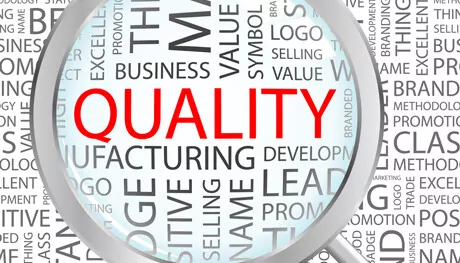Author: Michelle Anastasi, Director, Quality Management & Compliance, US, PharmaLex
According to the American Society for Quality, a quality management system (QMS) is a “formalized system that documents processes, procedures, and responsibilities for achieving quality policies and objectives.” For companies in life sciences and pharmaceuticals, maintaining a healthy QMS is crucial for ensuring compliance and adequate preparation for inspections. If you’re unsure whether your current QMS is hitting the mark, ask yourself the following four questions to identify if your processes adequately help you maintain compliance and quality control.
- Does the company have a Quality Policy and/or Quality Manual, approved by senior/executive management, and issued within the past three years?
A Quality Policy and Quality Manual are essential for establishing a consistent set of processes, procedures, and responsibilities for achieving quality objectives. A quality policy should outline the company’s commitment to meeting customer requirements and should be reviewed at least once every three years. It is also important to ensure that the quality manual contains all relevant information related to quality management, such as procedures, processes, and responsibility matrixes, which align with regulatory requirements.This policy and manual should outline the company’s commitment to quality and expectations regarding day-to-day operations. The purpose of this document is to ensure that all employees understand the company’s commitment to quality and comply with industry standards and regulations. Furthermore, it is important to ensure that the policy and manual are regularly reviewed for compliance at least every two to three years to reflect any changes within the organization over this period of time. In this way, companies can be confident that they are upholding their commitment to quality in all aspects of their operations. Additionally, having it approved by senior and executive management ensures that they are aware of the company’s stance on quality and they have taken responsibility for its implementation. - Are all controlled documents (SOPs, policies, work instructions, etc.) reviewed every 2-3 years by document owners in collaboration with quality assurance personnel?
In addition to the quality policy and manual, it is important to review all controlled documents (SOPs, policies, work instructions, etc.) at least once every two or three years. This should be done in collaboration between the document owners and quality assurance personnel to ensure that the documents reflect changes in regulations, customer requirements, and processes. It is important to ensure that all SOPs are up-to-date, relevant, and fit for purpose; that policies and work instructions are reviewed and updated when necessary; and that any new process or system is documented appropriately.Controlled documents, such as SOPs, policies, and work instructions, are important components of a company’s QMS. These documents serve to provide guidance and direction to staff on how processes should be conducted. For example, SOPs provide detailed information on the steps necessary to complete a process accurately and efficiently. Policies provide the framework for decision-making within the company, while work instructions are needed to ensure that tasks are completed in accordance with established standards. To ensure that these documents remain up-to-date and reflective of current regulations and best practices, they should be reviewed every two to three years by document owners and in collaboration with QA personnel. In doing so, companies can be sure that their QMS is up-to-date and compliant with industry regulations. - Does the CAPA and/or investigation procedure give a step-by-step description of how to conduct root-cause analysis while identifying effective CAPAs, and assess the impact on products and processes consistently in every investigation?
Without a clear understanding of how well their QMS is functioning, companies can miss out on identifying and correcting issues that could be impacting product quality or processes. Corrective and preventive action (CAPA) procedures are an important tool for evaluating the health of a company’s QMS as they must provide clear guidance on how to conduct root cause analysis, identify effective CAPAs, and assess the impact on products and processes consistently in every investigation. It is also essential that the procedures are adequately reviewed, approved by senior management, and regularly evaluated for effectiveness.By providing step-by-step instructions for conducting root cause analysis, CAPA helps ensure investigations are conducted consistently and effectively. They also allow companies to identify corrective actions that will prevent similar issues from occurring in the future, as well as assess any potential impact on products and processes. With these tools in place, companies can more easily evaluate their QMS and take steps to improve it where necessary. This can be a critical factor in ensuring quality control is maintained across a company’s products and processes. - Is a Quality Management Review conducted periodically, involving senior management, and does that review result in continuous improvement?
Finally, it is important to establish a quality management review process that is conducted periodically and involves senior management. This ensures that the company’s QMS is regularly evaluated for effectiveness and improvement. The results of this periodic review should be used to identify areas for improvement, ensure processes are up-to-date and compliant with regulations, and ensure that employees are trained and knowledgeable.This review helps to ensure that all necessary measures are taken to ensure compliance and continuous improvement in the organization’s quality management system. QMRs are conducted periodically—typically quarterly, though this may vary based on the size and scope of an organization—and they help to keep organizations in line with current regulations and best practices. The goal of these reviews is to identify any areas that need improvement or need to be updated so that corrective action can be taken if needed. Senior management is often involved in these reviews, as they have a vested interest in keeping the QMS up to date and ensuring that processes are being carried out properly. Through its periodic review process, an organization’s QMS should benefit from continuous improvement because it helps identify any areas that need to be addressed. The result is a better quality of products, services, and customer satisfaction.
By asking these four questions, companies can gain a better understanding of the health of their QMS. This can help them identify areas for improvement and make sure they are adequately prepared for inspections.








